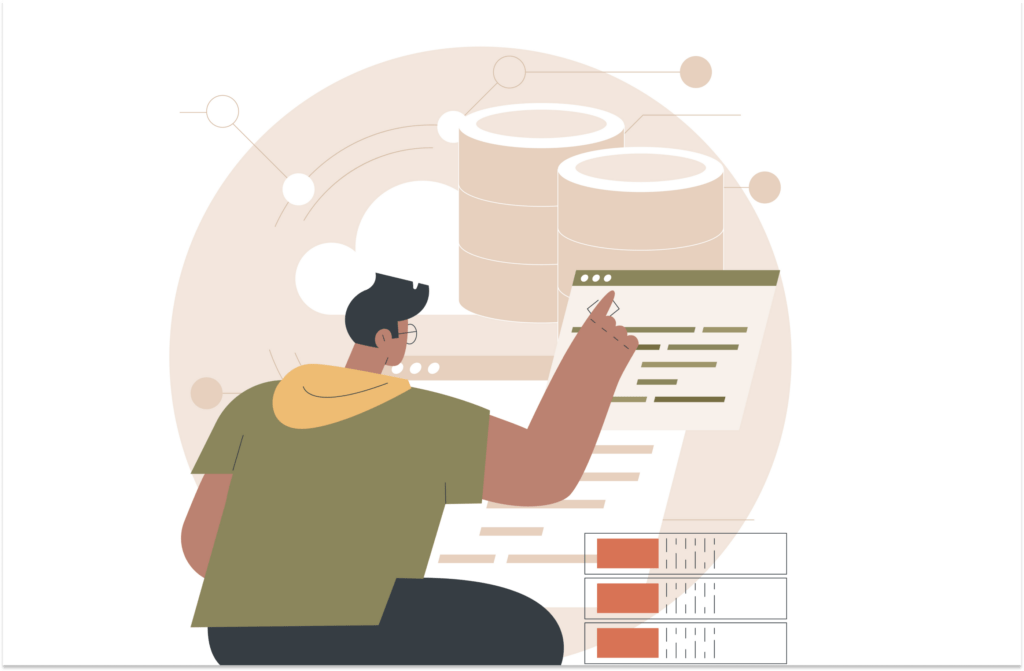We are always looking for even more insight on our prospective clients and industry. Data mining might be the perfect way for you to do just that. Through a four step process, you are able to gain a unique insight into your prospect’s thought process. In turn, you can use this to optimize your marketing and sales efforts. But, what even is data mining?
Well, What is Data Mining?
Data mining is the process of gathering raw data and making sense of it. It includes gathering, preparing, mining, and analyzing datasets to better understand your industry, trends, and better predict future business trends. This process can help your team understand the industry in order to make data-driven decisions, instead of playing guessing games. Although data mining can be a lengthy process, it can greatly benefit B2B companies as your team will be more agile and knowledgeable on what’s to come. There are a number of different ways that you can mine data, both inside and outside of your company. But, before we dive right into how you can mine data, let’s go through the four stages of data mining.
1. Data Gathering
The first step in your data mining journey is to gather the raw data. From multiple sources, you can gather relevant data that will help you discover trends. This data could be your own data warehouse or data lake, big data environment, or an external source. It is most often done with the help of a data gathering software or hiring a company to assist. Because the data comes from such large datasets, it can be nearly impossible for most companies to reasonably find and properly prepare without assistance.
2. Data Preparation
Next, we are moving on to the data preparation step. Once you know what sources that you are taking data from, you can start to pre-process your data and begin filtering through. Filtering through your data can ensure that it’s relevant and reduce the risk of mistakes down the road. It can also help you ensure that the data you gathered is high enough quality to use in your analysis and reports.
3. Data Mining
The step we have all been waiting for, data mining. With the prepared data, you are able to utilize machine learning to search for trends, associations, and patterns that you will focus on in your analysis. You can begin to identify problems and highlight stats that you want to review in the next stage.
4. Data Analysis
The final step in data mining is to actually analyze the data you have collected. This is where you make sense of the data, and try to create an action plan based on what you find. This can help you learn more about your company, industry, and clients. As a result, you can make data-driven decisions. Making decisions that have been backed up by data can help ensure that you are making the right choices, instead of guessing. And, you can even save money in the long run by doing this, as you won’t waste money on initiatives that don’t have a strong enough ROI.

Importance of Data Mining for B2B Companies
Data mining can help your company learn more about your industry and clients, to help improve business performance, update marketing initiatives, and optimize sales tactics. This should be music to any business person’s ears, as we spend hours every week trying to do just that. Aside from being able to save money, your B2B company can also predict future trends, create gated content, detect outliers and anomalies, and identify patterns that can help you optimize your business strategies.
Predict Trends
As a B2B company, it’s essential to be able to plan for the future. Where do you see your company in 5 years or 10 years? With data mining, you can get a better understanding of where the industry is now, and use that information to predict trends that will help you plan for the future. This level of agility can set you apart from your competitors and set your company up for success now and in the future.
Gated Content Opportunities
Because mined data is difficult to come by, you can use this to your advantage. Once you prepare your data and filter through to ensure it is relevant, you can create a document that other companies would be interested in. You can have this information gated on your website, where visitors can access by providing their contact information. Or, you can also sell this data as long as you have the rights to do so. Gated content can be a great way to collect even more data that you can use in the future.
Detect Outliers
When you are combing through your gathered data, it’s important to look for outliers. The term outlier refers to a piece of data that stands out from the rest, whether it’s good or bad. Understanding how your outliers got to where they are can help you prevent this from happening again in the future. Or, you can even identify untapped potential in certain markets. Just because there is an anomaly in your data, does not necessarily mean that it’s a negative thing. This could be an opportunity to expand your reach and differentiate.
Identify Patterns
One of the best ways to optimize your sales funnel is to identify patterns in your data. There is a good chance that your leads follow a similar pattern when they travel down your sales funnel. But, there will be a portion of your leads that take different paths. Data mining can help you identify these different patterns, and then you can take steps to improve those pathways.
Lower Costs
Data mining can help lower the cost of marketing and sales initiatives. This is because you can have a better understanding of your prospective clients as well as current clients. So, you can better tailor your marketing and sales initiatives based on what they want to see. You can optimize your lead generation tactics to drive leads who are highly qualified, and lead them throughout your sales funnel faster. You have the ability to better cater to their specific needs, and have happier and longer relationships with your clients.
Top Data Mining Tools
You may be wondering how you can start mining data today. The answer to this question is to utilize a data mining tool. Every data mining tool will work differently, so it’s important to thoroughly research what each does before committing to one. Here are a few of the top data mining tools on the market.
MonkeyLearn
MonkeyLearn is a text analysis tool that allows you to easily analyze various forms of text data. This includes topic detection, keyword extraction, and more. With their list of integrations and API access, you can analyze and make use of a variety of data sources. You can use this data to automate business workflows and ultimately save time doing tedious tasks. This is a no-code solution. MonkeyLearn is a relatively new data mining software that is taking the industry by storm. Prices start at $299.00 USD per month.
H2O
H2O states that they empower companies to be AI companies. With their unique data mining algorithms, your company is able to solve a number of AI transformations. H2O is extremely beneficial for both financial and healthcare industries, with impressive case studies detailing their fraud detection and personalized medicine. Additionally, they focus on increasing customer experiences through loyalty and brand safety features. They don’t have their prices listed on their website, however they do offer an impressive 90 day free trial.
Oracle Data Mining
Oracle Data Mining, or ODM, offers market-leading performance, reliability, security, and scalability. ODM requires a thorough understanding of JavaScript in order to implement, but is capable of yielding great results. They work with a variety of industries, including health care, government, financial services, and manufacturing. ODM continues to update its data mining abilities, and offers new features regularly. They offer custom plans based on your data mining needs.
Tableau
Tableau is a business intelligence software that helps companies visualize and understand their data. They are one of the oldest data mining software on the market, and are owned by Salesforce. Key features include fast analytics, smart dashboards, and usability for any skill level. Tableau allows you to create dashboards to help you transform data into actionable insights. They offer custom plans based on your needs, as they work with companies of all sizes.
How to Get More Data Today
The process of data mining is extremely lengthy. It can take months to properly gather, prepare, mine, and then analyze the data. On top of that, you need to make sense of the data and implement your business decisions accordingly. Want more data about your business today? Check out Visitor Queue! Visitor Queue is a B2B lead generation software that can identify the companies that visit your website. Along with a company overview, industry, and firmographic information. Additionally, gain insight into what the company did on your website, including how they were acquired, what pages they viewed, and how long they spent on each page. Finally, our software allows you to see key employees that work at each company to help you reach out. By knowing what they did on your website, you’ll know exactly what they were looking for. Plans start at just $49 USD per month. Start your 14-day free trial today and get virtually instant data right at your fingertips.
Wrap Up
Data mining can be a long, but worthwhile process to gain unique insights and understanding. With data mining, you are able to improve your sales cycle, understand your clients, and ultimately drive more conversions. While data mining can be difficult and require a more robust skill set than other marketing initiatives, it can be well worth it. If you’re looking for a fool-proof way to get more insight on your customers, don’t forget to check out Visitor Queue.
 Identify
Identify Personalize
Personalize Benchmark
Benchmark Agencies
Agencies Integrations
Integrations Case Studies
Case Studies Use Cases
Use Cases Blog
Blog Resources
Resources









